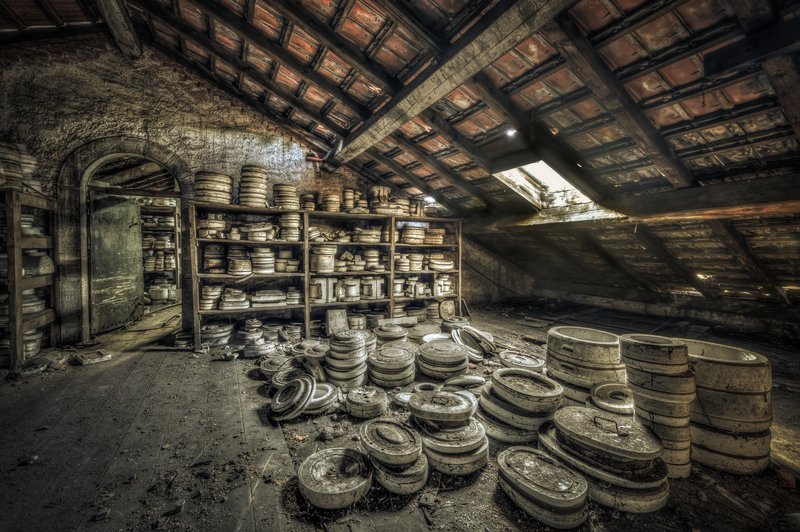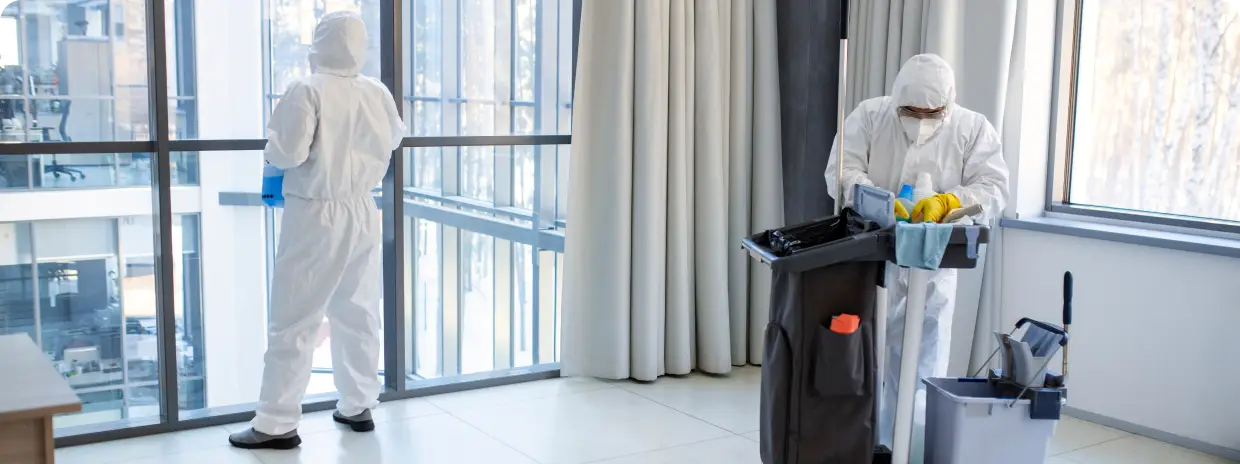Discover the Best Practices for Cleaning Velvet Curtains and Preserve Their Beauty
If you're looking to preserve the elegance of your velvet curtains and keep them looking plush for years, it's essential to follow effective velvet curtain cleaning techniques. This comprehensive guide will introduce you to the best practices for cleaning velvet curtains, offering step-by-step advice on maintenance, stain removal, and long-term care. Whether you've just invested in new luxurious drapes or want to refresh vintage velvet curtains, read on to unlock the secrets to lasting beauty and effortless sophistication.

Understanding Velvet: The Opulence and the Challenge
Velvet exudes timeless luxury. Its rich texture and captivating sheen make it a favorite for home decor, especially for curtains that make a statement. However, that very sumptuous surface is also delicate and prone to damage if cleaned improperly. The tightly woven fibers of velvet can be compressed, crushed, or discolored by harsh chemicals, heat, or excessive moisture.
Before you dive into cleaning, it helps to understand the unique properties of velvet so you can treat your curtains with the care and respect they deserve.
- Pile Fabric: Velvet is made with a dense pile of upright fibers, giving it a soft, plush hand-feel.
- Sensitive to Water and Heat: Too much moisture or heat can flatten velvet's pile, causing a loss of sheen or even shrinkage.
- Can Attract Dust: Velvet's surface can trap dust, pet hair, and debris more readily than smoother fabrics.
That's why it's critical to use the right cleaning strategies for velvet drapes to preserve their texture, color vibrancy, and remarkable beauty.
Routine Maintenance: The Key to Keeping Velvet Curtains Fresh
Dusting and Vacuuming: Weekly Velvet Curtain Care
Regular dust removal helps stave off deep-set grime and prevents the accumulation of allergens. Here's how to do it safely:
- Use a Soft Brush Attachment: Attach a gentle upholstery or soft brush tool to your vacuum cleaner.
- Test in a Hidden Area: Before vacuuming the entire panel, check a small, inconspicuous spot to ensure it doesn't flatten or snag the pile.
- Work with the Nap: Velvet's pile has a direction (the "nap"). Always brush or vacuum in the direction of the nap to preserve the smooth finish.
- Low Suction Only: Avoid using high suction, as it can pull or stretch the fabric.
- Frequency: Vacuum your velvet curtains once a week or more often in high-traffic, dusty environments.
Spot Cleaning: Handling Accidents Swiftly and Gently
No matter how careful you are, spills can happen. Reacting quickly to stains on velvet curtains is essential for preventing permanent marks.
- Blot, Don't Rub: Use a clean, dry cloth or paper towel to blot up as much of the spill as possible. Never rub, as this can push the stain deeper into the pile and damage the fibers.
- Use Cold Water Sparingly: For water-based stains, lightly dampen a soft cloth with cold water and continue to blot. Work from the outside of the stain towards the center.
- Avoid Over-Wetting: Excess moisture can crush or discolor velvet. Only use as much dampness as needed.
- Let Air-Dry: Allow the treated area to air-dry completely. Fluff the nap gently with your fingers or a soft-bristle brush when dry.
Deep Cleaning Velvet Curtains: The Safe and Effective Way
Can You Wash Velvet Curtains?
The answer depends on the type of velvet:
- Natural Velvets: Silk and cotton velvet are delicate and typically not recommended for home washing or machine cleaning.
- Synthetic Velvets: Some polyester or microfiber velvets may be labeled as machine-washable, but always consult the care label first.
In most cases, the safest approach is professional dry cleaning. However, for those determined to attempt cleaning at home, here's what you need to know.
Hand-Washing Velvet Curtains (If Permitted by the Care Label)
- Remove Hardware: Take down the curtains and detach all hooks, rings, or weights.
- Shake Gently: Shake them outdoors to remove loose dust and debris.
- Prepare a Mild Solution: Fill a clean bathtub with cool water and a small amount of gentle liquid detergent (preferably one formulated for delicates or velvet).
- Submerge and Soak: Gently immerse the curtains, agitate lightly, and leave to soak for no longer than 15-20 minutes. Never use hot water, bleach, or fabric softener.
- Rinse Thoroughly: Drain the tub and refill with cool, clean water. Swish the curtains gently to remove all soap residue. Repeat rinsing if needed.
- Do Not Wring: Carefully press out excess water using your hands. Never twist or wring velvet fabric--this can crush the pile and damage its structure.
- Air Dry Flat: Lay the curtains flat on a clean, dry towel, reshaping as needed. Allow them to air-dry completely out of direct sunlight and away from heat sources.
- Restore the Nap: Once dry, use a soft brush or the palm of your hand to gently lift and smooth the nap of the fabric.
Machine Washing: Proceed with Caution
If the care label states that machine washing is safe, use the following guidelines:
- Gentlest Cycle: Set the washing machine to the delicate or hand-wash cycle.
- Cold Water Only: Use cold or cool water to prevent pile damage or dye fading.
- Mild Detergent: Only use a detergent meant for delicate fabrics.
- Protect the Fabric: Place curtains in a large mesh laundry bag to prevent snags.
- Hang to Dry: Do not tumble dry. Hang the curtains or lay flat to air-dry as quickly as possible.
Dry Cleaning: The Safest Option for Most Velvet Curtains
When in doubt, always opt for professional dry cleaning. Dry cleaners have the expertise and equipment to clean velvet curtains thoroughly while protecting their structure, vibrance, and soft touch. This method is particularly recommended for:
- Silk or cotton velvet drapes
- Lined or interlined velvet curtains
- Heavily soiled panels
- Unlabeled or vintage velvet
Be sure to choose a reputable dry cleaner with experience in handling specialty fabrics like velvet.
Specialist Tips: Stain Removal and Odor Control
How to Remove Tough Stains from Velvet Curtains
Deep stains require prompt attention and the right products. Here are some specialist-approved solutions:
- For Oil-Based Stains: Sprinkle a small amount of cornstarch or baking soda on the stain. Let sit for 15-20 minutes to absorb oil, then gently brush off and spot clean as usual.
- For Ink or Wine: Blot excess immediately, then use a mixture of one part rubbing alcohol to three parts cold water. Dampen a soft cloth and blot gently, working in the direction of the nap.
- For Pet Accidents: Clean up solids, then blot with a solution of mild detergent and cold water. Rinse with a damp cloth and air-dry.
Always perform a spot-test in a hidden area before using any cleaning solution to avoid discoloring or damaging your velvet curtains.
Banishing Odors from Velvet Curtains
To keep velvet curtains smelling fresh:
- Sprinkle lightly with baking soda and allow to sit for an hour. Gently vacuum with a soft brush attachment.
- For persistent odors, hang curtains outdoors on a dry, breezy day--avoid direct sun.
- If the odor persists, consult a dry cleaner with deodorizing capabilities.
The Do's and Don'ts of Velvet Curtain Care
Essential Do's
- Do check and follow manufacturer's care labels before cleaning.
- Do vacuum regularly to remove dust and maintain vibrancy.
- Do address stains and spills as soon as possible using gentle, blotting techniques.
- Do air-dry curtains flat and reshape while damp if home washing is allowed.
- Do brush or smooth the nap after cleaning to restore texture and sheen.
Important Don'ts
- Don't use bleach, harsh chemicals, or abrasive cleaning tools.
- Don't rub stains--always blot gently.
- Don't tumble dry or iron on high heat.
- Don't ignore the care label or manufacturer's cleaning advice.
- Don't leave velvet curtains crumpled or in direct sunlight while drying.
Ironing and Steaming: Restoring Velvet Curtain Elegance
Wrinkles can mar the opulent look of velvet, but ironing can be risky. Instead:
- Use a clothes steamer (never a direct iron) held a few inches from the surface, gently steaming the curtains to relax creases.
- Alternatively, run a hot shower and hang the curtains in the bathroom (avoiding direct water contact), letting steam do the work.
- Finish by smoothing the pile with your hand or a soft brush.
Never press an iron directly onto velvet fabric, as the heat can flatten and scorch the beautiful pile.
Long-Term Tips: How to Preserve Velvet Curtain Beauty
- Keep Out of Direct Sunlight: Prolonged exposure can cause fading. Use blinds or sheers behind velvet curtains if needed.
- Avoid Damp Environments: Humidity can encourage mildew. Ensure good airflow around your drapes.
- Rotate Curtains: If possible, rotate panels occasionally to even out sun exposure and wear.
- Professional Cleaning: Have your velvet curtains professionally cleaned at least once a year or as recommended by the manufacturer.
By following these best practices for cleaning and maintaining velvet curtains, you can enjoy their luxurious look and feel for many years to come.

Frequently Asked Questions About Cleaning Velvet Curtains
Can you use a handheld steamer on velvet curtains?
Yes, gently steaming velvet curtains is one of the safest ways to remove wrinkles and revive the pile. Always hold the steamer a few inches away and use gentle motions.
How often should you clean velvet drapes?
Vacuum weekly to remove dust and dirt. Deep or professional cleaning is typically recommended every 12-24 months, or sooner if heavily used or stained.
Is it okay to tumble dry velvet curtains?
No, never tumble dry velvet. Always air-dry, reshaping while damp and keeping the fabric out of direct sunlight and heat.
Should I use fabric softener when washing velvet curtains?
No, fabric softener can coat and flatten velvet's pile, reducing its luster and softness.
Conclusion: Celebrate the Luxury of Velvet Curtains with the Right Care
Velvet curtains are an investment in beauty and comfort. With proper attention and the best practices for cleaning velvet curtains, you'll preserve their incredible softness, lustrous color, and iconic pile for many years. Remember to approach cleaning with caution, prioritize regular dust removal, and consult professionals for anything beyond basic care. Your home will glow with timeless sophistication--and your velvet drapes will always look their very best.
